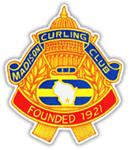The roots of the Madison Curling Club date back to 1921, when some hearty University of Wisconsin professors and Madisonians made one sheet of ice under the stadium bleachers at Camp Randall on the campus of the University of Wisconsin. The early curlers each had their own set of stones and, therefore, uniform size and performance of stones was virtually nonexistent. The club was located under the Camp Randall bleachers from 1921 to 1929.
In 1930, these members got permission from the City of Madison to build a wooden building with casement windows at Burr Jones Field on East Washington Avenue. Ice was made when the weather was cold enough. Due to lack of artificial ice making equipment, some of the early “spiels” would have curling draws into the early morning hours.
In 1950, a cement block 18 x 45 foot clubroom with a small kitchen was added and artificial ice making equipment was installed under the sand of the four sheets. In 1958 the wooden walls of the rink house were replaced with cement blocks and the men’s locker room and the clubroom were expanded. Expansion of the men’s locker room took place in 1964, along with the addition of a women’s locker room. The Madison Curling Club was at the East Washington Avenue location for seventy-nine years. Unfortunately, in September of 1997, the club’s relationship with the City of Madison came to an end.
In June of 1997, our new multipurpose, six sheet facility was constructed at a cost of 1.3 million dollars at William McFarland Park in McFarland, WI. The club’s relationship with the Village of McFarland has been a positive experience. Together the Madison Curling Club and the Village of McFarland will make it possible for generations to enjoy the game and foster the spirit of the “grand old game” of curling.
As we mark our 12th anniversary in our current facility, it is hoped that new club members will gain an appreciation for the vision and financial support of the past members. In turn their support of the Madison Curling Club will enable others to enjoy the experience of curling into the next millennium.
– Cliff Andreoli, 2009






